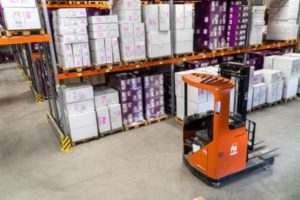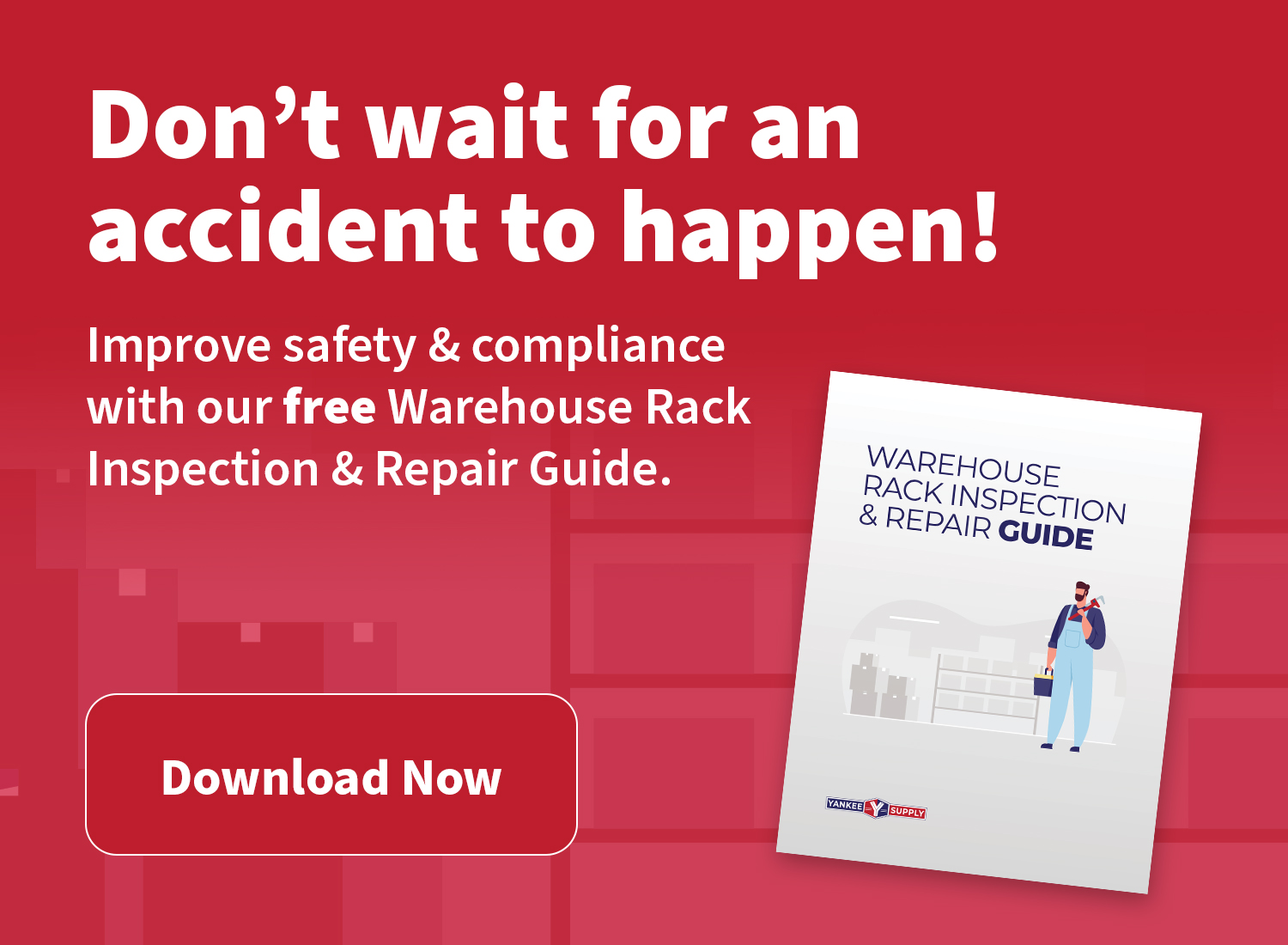Distribution warehouses are one of the most important and sought-after businesses today. It’s essential to society because it checks the goods and materials that are moved from one place to another. But thinking about it, what makes a distribution warehouse business tick? What makes it successful? More importantly, if you’re an existing distribution warehouse owner, how can you maximize profit for your business? The answers will be discussed here.
What Is A Distribution Warehouse?
Distribution warehouses are buildings that store and distribute goods to many customers at various locations over a large area. Typical practices for distribution warehouses include the use of pallet racking, automated storage and retrieval systems (AS/RS), ventilation, motion detection, color-coding methods, forklift safety practices, etc. Distribution warehouses are typically located in rural areas, away from the busy lifestyle of big cities. They are also strategically located near exporters, manufacturers, and transportation hubs to ensure quick distribution practices across the country.
As an integral part of supply chain management practices, distribution practices have a new meaning in today’s day and age, with e-commerce distribution practices becoming increasingly popular amongst internet-based retail stores. Distribution practices involve several aspects ranging from storage practices to order processing practices. The following infographics highlight various best practices followed by some top-performing distribution warehouses worldwide.
Data practices, storage practices, and shipping practices are the three pillars of a distribution warehouse business. According to industry experts, there is a lot of competition in the warehousing sector because of increased customer demands. The challenge, therefore, lies in establishing practices that give your customers what they need while still making your business profitable. With picking automation and order management practices becoming more mainstream every day, it has become much easier for warehouses to manage large-scale operations with precision accuracy without any errors or redundancies.
Distribution Warehouse As A Business Industry
The distribution warehouse industry has grown into an indispensable part of supply chain practices. These practices are now considered the heart and soul of any successful business enterprise, no matter what industry the company practices in. With e-commerce practices becoming increasingly popular, more warehouses are being built with modern automation practices to handle digitally distributed goods efficiently. Apart from that, changes in customer demands have meant that distribution practices must now provide customized or tailored services according to specific needs. According to experts, the industry practices an annual rate of 15 percent growth.
Warehouses are now being built close to major cities for maximum convenience practices. In addition, with the prominence of online practices, warehouses are becoming more sophisticated with practices like pick automation practices to ensure that customers can get what they need quickly and efficiently. As a result, there has been a massive surge in job practices across the board as more and more people look for jobs within this industry. According to recent studies, the distribution warehouse industry practices about $56 billion worth of trade each year. This industry practices about 42 million square feet of warehousing space each year, making it the 8th-largest industry in terms of practices.
According to experts, Distribution warehouses are now trying to increase their profits by focusing more on practices that provide better customer satisfaction practices while remaining profitable at the same time. They are doing this by making strides towards practices like innovative manufacturing management practices to achieve greater customer satisfaction with methods like customized services. These warehouses use mass customization practices where customers can get what they need quickly without any errors or redundancies in the process.
Distribution Warehouse Best Practices To Apply
Distribution warehouses can be built in different shapes and sizes, but the best practices to apply are the same. We will go through them one by one:
- Flow racks or racking systems should be used to store all products within walking distance of each other. This way, pallets can be stored three levels high, occupying 1/3 less space than standard storage practices. Suppose flow racks are not enough for your warehouse. In that case, you should implement AS/RS (automatic storage and retrieval systems), which are multi-tiered platforms that move around on rails, making it easy for workers to pick items without walking long distances. Using this type of system minimizes human error because the shelves come directly at people when they call for it and increase the overall productivity in your facility.
- Aisles should be wide enough for workers to pass each other with pallets but narrow enough so that one worker can easily reach all products throughout an aisle without leaving general aisle space. This is more of general practice for warehouse clubs often packed with products, sometimes making it hard to walk through aisles even if they are physically large. The goal is not to make them feel small for employees but somewhat easier to navigate because people will have less difficulty reaching all their items.
- Using color coding practices by letting merchandise stand out of the crowd, you will minimize abandoned carts and reduce mistakes made by pickers while finding things on the shelf quickly, which will increase the amount of product picked per hour.
- Implement automated practices for high-density storage by using flow racks or AS/RS. These are both designed to be used with pallets and can easily store up to 4 levels (40ft) high when combined; this will help you maximize space in your warehouse without buying multiple storage units.
- Place shelves along walls wherever possible to save aisle space, therefore, maximizing productivity in your distribution center. An additional benefit of this is that it prevents people from working near employee exits because people do not want to run into them while they are leaving their shift, which causes unnecessary accidents. Another positive thing about putting shelves against walls is that it makes picking easier for pickers who have difficulty reaching the back of shelves and merchandise.
- Implement practices that promote safety, such as using clear aisle practices so that forklift operators can easily see people as they drive through aisles and pedestrians can see what is coming at all times. This way, you minimize injuries or fatalities because both people operating machinery and those working in the warehouse know where each other are at all times. It would be best if you also used marked crosswalks so that your workers know exactly where they should be walking and always keep them well lit, so there is no confusion about where it starts and where it ends.
- Lighting practices should be implemented so that the efficiency and safety of your distribution center increase exponentially, therefore minimizing human error by pickers, forklift operators, and whoever else walks through your warehouse. Sequenced florescent lights or motion detection practices can be easily applied at a low cost compared to new practices that you may have to buy if the current ones are not up to par with what you need from a distribution center. These simple practices will significantly help those working in warehouses and those who store products inside them successfully enjoy their jobs, knowing they will come out injury-free or at least minimally injured after a shift on the job.
- Implement practices that keep your warehouse organized and neat to keep workers from getting hurt because it is easy for them to trip over things when aisles are not kept clean. Shrink practices such as using shrink wrapping machines, shelving units above the shelve below or on top of each other can be easily applied at zero cost if you have an in-house unit or some supply that can do so. If you use practices such as this one, your distribution facility will stay neat and organized, preventing accidents and people from injuring themselves before they even physically get to work.
- Implement practices that increase the convenience of working in a warehouse by having features such as a break room, lockers to store personal belongings while on shift, and a place where employees can spend their breaks. This will ensure that your workers are comfortable enough with their work environment because no one wants to have lunch in an uncomfortable atmosphere. Providing this for them is beneficial from a moral standpoint and an employee satisfaction standpoint because you will be able to get twice, if not more, productivity out of your warehouse staff members compared to warehouses without these practices.
- Increase safety practices by minimizing blind spots wherever possible while still allowing people easy access around the facility. This can be easily achieved by using double-deep racks or two rows of products for each shelf. This way, people operating machines can see anyone around them while driving their machine, and pickers will not be in the blind spot of whoever is trying to get into or out of aisles. It would also be beneficial to have practices such as this one on your floor plans on an image of your facility before you make any changes because it is easy enough to adjust practices until you get the result you want.
- Implement practices that minimize costs while at the same time increasing efficiency by recovering wasted space with practices such as double-deep racks, adjustable shelves, and wire mesh/wire cages which prevent products from falling onto the ground when there are high winds outside. These practices provide more shelf space, which means more products can be stored without having to buy extra shelves; therefore, practices such as this one are good practices because they save space and money.
To sum it all up, the best practices that can be applied to your distribution warehouse includes; practices that increase efficiency and safety, practices that save space and money, practices that keep the workplace organized and neat (keeping workers from getting injured), practices such as having a break room for employees and lockers for their belongings on shift.
These practices all improve the overall workflow of warehouses by removing bad practices such as using more staff than necessary or not providing enough space for storage.
The most helpful practices to use in your distribution facility are those that increase the cost-effectiveness of it and link back to reasons why you would want these practices:
- They will allow you to get twice if not more output compared with without these practices.
- They prevent needless injuries.
- They save space/money.
- They keep workers happy and comfortable.
- Practices such as these give you a good reputation and increase the chance of getting future contracts.
An effective distribution warehouse does not have to cost a lot of money. However, if those practices mentioned applied, the return on investment is much greater than if those practices that were detrimental to your practice were used instead.








